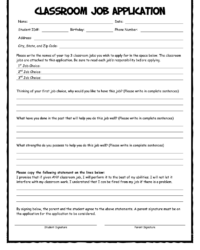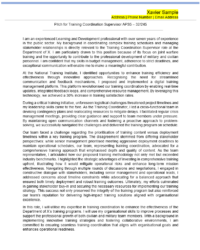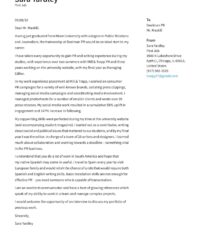Utilizing such a framework can significantly increase a candidate’s chances of securing an interview. A well-organized application demonstrates attention to detail and professionalism, qualities highly valued by employers. It can also reduce the stress and uncertainty associated with applying for jobs, providing a roadmap for presenting one’s best self. This support is particularly helpful for those new to the job market.
The following sections will delve into the key components of an effective application document, offering practical advice and specific examples tailored for younger applicants. Topics covered will include crafting compelling descriptions of skills and experience, highlighting relevant extracurricular activities, and addressing potential gaps in formal work history.
Key Components of a Job Application Framework for Young Applicants
Effective applications share common structural elements crucial for conveying relevant information clearly and concisely. Understanding these components is essential for creating a strong first impression with potential employers.
1. Contact Information: Accurate and up-to-date contact information, including full name, phone number, email address, and mailing address, allows employers to easily reach candidates for interviews and further communication.
2. Objective Statement (Optional): A concise statement outlining career goals and desired position can demonstrate focus and ambition. This section should be tailored to each specific job application.
3. Education Summary: Listing schools attended, including dates of attendance, degrees earned or expected, and relevant coursework, provides employers with an overview of academic achievements.
4. Skills Section: Highlighting relevant skills, both hard and soft, allows applicants to demonstrate their capabilities and suitability for the position. Examples include computer proficiency, language skills, and teamwork abilities.
5. Experience Section: Detailing prior work experience, including job titles, company names, dates of employment, and responsibilities, allows employers to assess practical skills and experience gained. Volunteer work and extracurricular activities can also be included in this section.
6. References: Providing a list of professional references who can vouch for an applicant’s skills and character adds credibility to the application. Contact information for references should be included with their permission.
A well-structured application incorporating these elements presents a comprehensive picture of a candidate’s qualifications and potential. Each section contributes to a cohesive narrative demonstrating suitability for the desired role. Careful attention to these components increases the likelihood of a successful job application outcome.
How to Create a Job Application Template
Creating a standardized template offers significant advantages when applying for employment. A template ensures consistency, professionalism, and efficiency throughout the application process.
1. Choose a File Format: Selecting a widely accessible file format, such as .docx or .pdf, ensures compatibility with various computer systems and software. A .docx file allows for easy editing and customization for each specific job application.
2. Structure Contact Information: Begin the template with a clear and concise section for contact details. Include full name, phone number, email address, and mailing address. Ensure this section is prominently displayed at the top of the document.
3. Craft an Objective Statement Section (Optional): Include a placeholder for an objective statement. This section can be tailored for each application to reflect the specific job requirements and career goals.
4. Develop an Education Section: Create a structured section to outline educational background. Include fields for school names, dates of attendance, degrees earned or expected, relevant coursework, and GPA (if desired).
5. Design a Skills Section: Develop a dedicated section for listing relevant skills. Categorize skills into hard skills (e.g., software proficiency, technical abilities) and soft skills (e.g., communication, teamwork, problem-solving).
6. Create an Experience Section: Structure a section for detailing work experience, including job titles, company names, dates of employment, and a concise description of responsibilities. This section should also accommodate volunteer work and extracurricular activities.
7. Incorporate a References Section: Include a section for listing professional references. Provide space for their names, titles, organizations, phone numbers, and email addresses. Always obtain permission before listing someone as a reference.
8. Maintain a Professional Appearance: Use a clean and professional font, such as Times New Roman or Calibri, in a readable size (10-12 point). Ensure consistent formatting throughout the document, with clear headings and appropriate spacing.
A well-designed template streamlines the application process by providing a consistent framework. This allows applicants to focus on tailoring content to the specific requirements of each job opportunity while maintaining a professional and organized presentation.
A well-crafted application document serves as a critical tool for young individuals entering the competitive job market. Leveraging a structured template ensures a professional and comprehensive presentation of skills, experience, and qualifications, maximizing the potential for securing desired positions. Understanding the key components of an effective application, including contact information, objective statements, educational background, skills, experience, and references, allows applicants to present a cohesive narrative demonstrating their suitability for employment. Careful attention to detail and consistent formatting contribute to a polished and impactful final product.
Effective application materials represent a crucial first step in the pursuit of professional opportunities. The ability to articulate skills and experience clearly and concisely empowers young individuals to navigate the job market successfully, laying a solid foundation for future career growth and development. By investing time and effort in crafting compelling applications, individuals gain a distinct advantage in showcasing their potential to prospective employers.


